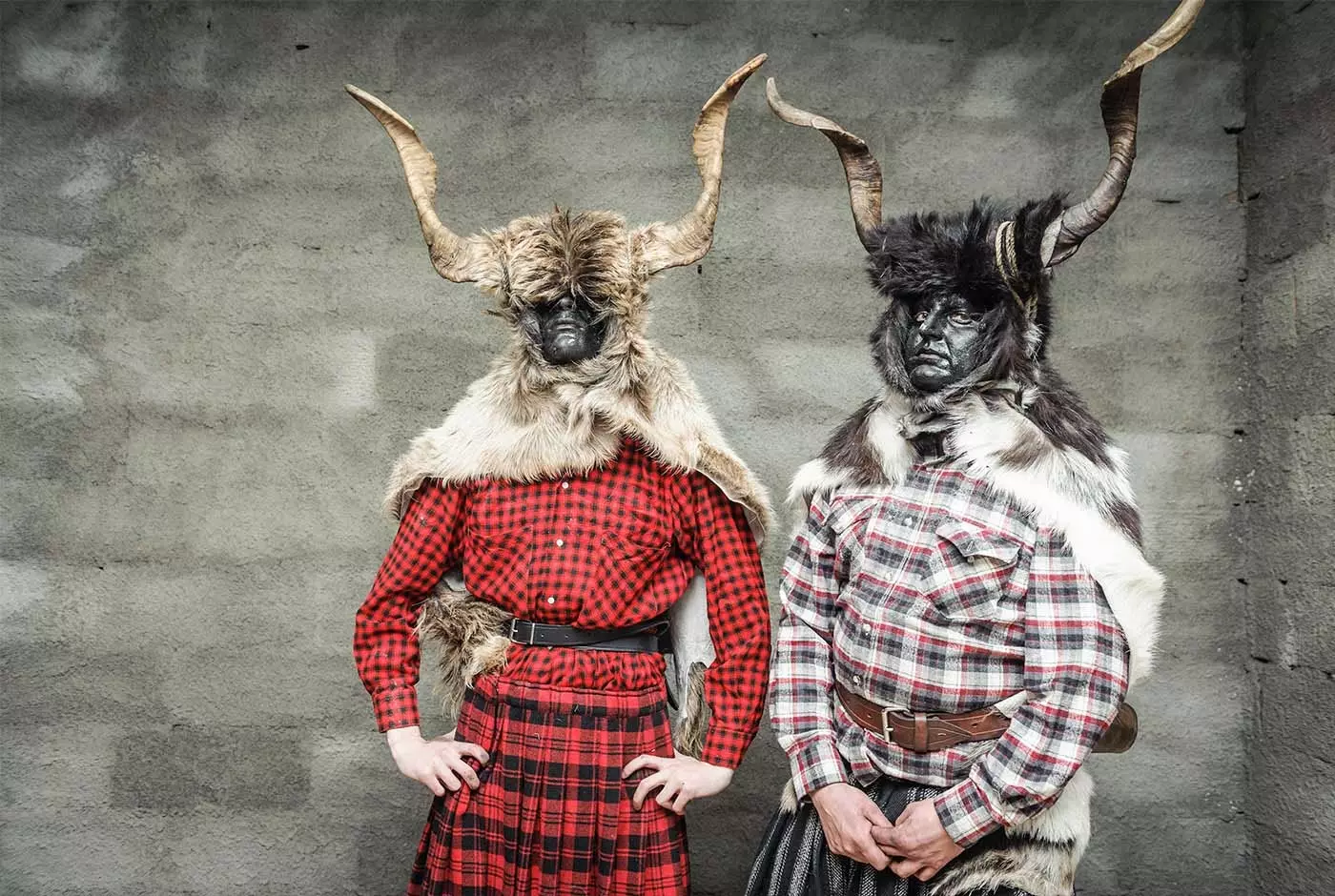
Bielsa Carnival
EAGLES (MURCIA) : CONFETTI EGGS WAR Date: from February 18 to March 4
To speak of Carnivals in Águilas is to do it eggs, monsters and good drinks . Every year, this peculiar carnival starts with the " Release of the Mussona ", an ancient character who represents the struggle between order and chaos and who, let's face it, is quite scary. He is a kind of beast that growls at children and annoys adults. His costume and makeup is spectacular.
Then there are the ' shells '. The days before the arrival of the festivities, the columbines keep the shells of their eggs almost intact (and empty). They dry them in the sun and then fill them with confetti . With them, they will a mythical battle in which they break each other's eggs on the head . And to quench your thirst between so many scares and eggs, the traditional thing here is to have a good drink of curve , an explosive cocktail nicknamed the "drink of the Gods" and made with leftover spirits from Christmas.
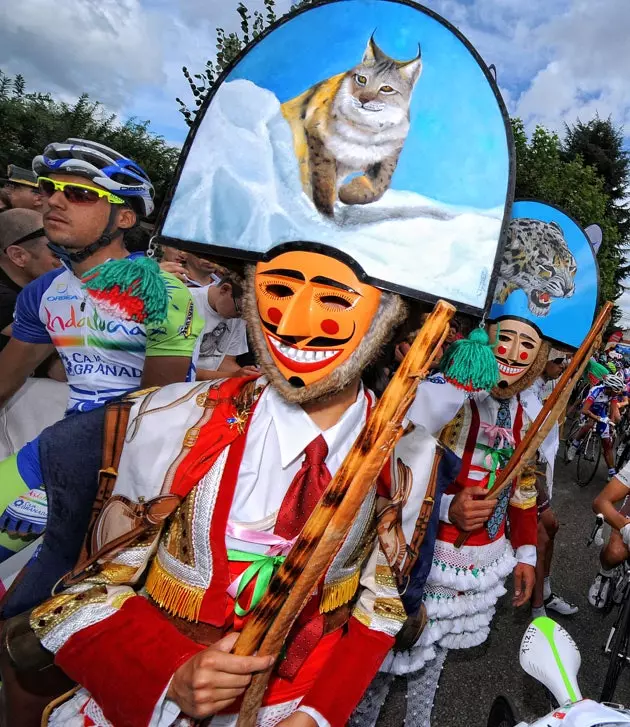
Peliqueiros of Verin
LAZA, VERÍN AND XINZO DE LIMIA (ORENSE): PELIQUEIROS AND ANTS Date: from February 3 to 28 (Laza), from February 16 to 28 (Verín) and from February 4 to March 5 (Xinzo) _
To experience the authentic Galician Entroido you have to travel to Laza, Verín or Xinzo de Limia, in Orense . In these small towns, the Carnival has been declared a Festival of National Tourist Interest. For starters, they have their own carnival characters. For example in Laza, the king and absolute owner of the Carnival is the Peliqueiro . He is a popular character dressed in a mask, a traditional costume, látivos and chocas (bells of more than a kilo and a half).
In **Verín they are known as Cigarróns** and they hand out lashes right and left to anyone who gets in their way (and since you're not in disguise, get ready to run!). In Xinzo de Lima are the Screens the characters that animate the party with the sound of the bells around his waist and the dry and inflated cow bladders that beat endlessly.
In these small towns you will also live what is known as Sunday Fareleiro , where people throw flour and farelos at each other without mercy; the farrapada , a game where Galicians throw muddy rags at each other; wave Departure from the Morena, when the neighbors throw giant ants mixed with vinegar and flour.
VILLAR DEL ARZOBISPO (VALENCIA): THE BURIAL OF THE MORCILLA Date: from February 23 to 26
When the carnivals arrive, in Villa del Arzobispo they prefer meat to fish. And so, substitute the traditional sardine for a morca, that is, a blood sausage . It is known as the Burial of the Morca. And they do it in great detail: a parade of torches, a funeral orchestra and the cries of mourners, until finally the black pudding is cremated. Another act not to be missed is the ' burn the chinchoso' , a life-size doll that represents the most hated popular character of the year. Here Politicians take the cake.
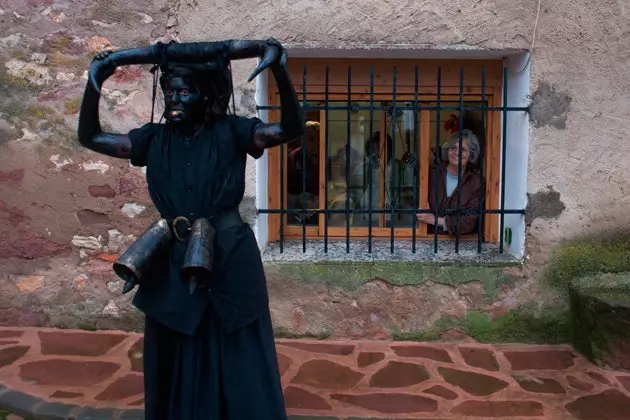
A scary carnival
LUZÓN (GUADALAJARA) : DEVILS WITH BULL HORNS Date: February 18
Their entire bodies smudged with soot, with skirts and large cowbells on their belts, disproportionate teeth and bull horns on their heads, the devils of Luzon star in the Carnival of this small town in Guadalajara . Be careful not to get too close to them, because they chase all the people who cross their path, attacking them with your brand of soot and oil . The mascaritas, who carry a rod to defend themselves, are the only ones that the devils do not attack. They have their faces covered by a white cloth with holes for eyes, nose and mouth, and a patterned scarf on their heads. With a centuries-old tradition, Luzon festivals are recognized as the best carnival in the whole Alcarria.
TORELLÓ (BARCELONA): SEX AND FUN Date: from February 23 to March 3
The starting signal of the Carnival of Torelló is marked by the party of ** El Pullassu (the big cock) **, a playful-sexual parade with different characters , juggling, wine, grallers and a lot of partying. Their destination: the Plaza Vieja, where the ritual is celebrated. Here the sorcerer Xapot invokes the bastard son of the Carnival King, Margalef, who the reproductive organ is cut, and then cooked and a magical brew is prepared. Then people enjoy a sausage popular accompanied by that magic potion made with the member of the bastard. On Carnival Friday it's time sex change with the Senyoretes and the Homenots. The women become rough men, while the gentlemen wear their most feminine finery.
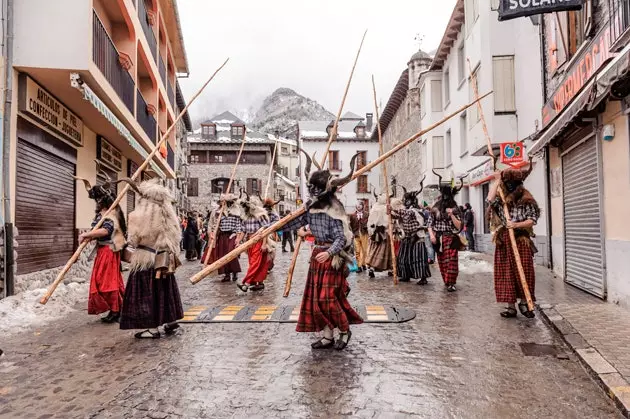
The trangas of the Bielsa Carnival
BIELSA (HUESCA): TRANGAS AND MADAMAS Date: from February 23 to 27
Of all the ancestral characters that star in the Bielsa Carnival, the trangas and madamas are undoubtedly the most popular. Half man, half dress, the trangas are the unmarried boys of the town dressed in the skin and horns of a male goat. . They carry cowbells on their waists and a long stick in their hands to frighten the residents of the town. For its part, the madamas are the single young women , dressed in delicate suits of silk, satin and colored ribbons. Tradition dictates that the trangas pick up the madams and walk through the town.
VILANOVA I LA GELTRÚ (BARCELONA): THE BATTLE OF MERENGUE Date: from February 5 to March 4
The carnivals of Vilanova i la Geltrú are undoubtedly one of the sweetest in Spain. And the fault of it is his popular Merengada . On Fat Thursday, boys and girls make a route through the town's patisseries throwing cream and meringue. At midnight, the party continues and hundreds of people gather in the square loaded with meringue cubes and ready to get dirty from head to toe.
Before the pitched battle, the homes of Vilanova i la Geltrú regain strength with a very traditional menu: the xatonada , an ensenada of radish, arbequinas, tuna, cod and escarole bathed in a sauce known as Xató; tortilla of different flavors (essential the artichoke, beans with black pudding and potato and onion) , meringue and _llardons cokes (_cocas de pork rinds) . The Xató is so popular in Catalonia that there is even a gastronomic route to taste it in all its varieties.
ALMIRUETE (GUADALAJARA): MASKS AND BOTARGAS Date: February 25
The Carnival of ** Almiruete ** celebrates the traditional Mascartitas and Botargas Festival . On Carnival Saturday, the young people of the town dress up as Botargas in a secret place on the mountain. At the sound of the horn, they go down and walk through the town, sounding their bells and looking for the Mascaritas. Both figures represent opposite poles: the mascarita represents delicacy, the counterpoint to the rude figure of the botarga . When they meet, they go to the square where they throw lint and bits of paper symbolizing the fertility of the Mother Earth. They love this festivity so much in Almiruete that they even have a museum dedicated to it.
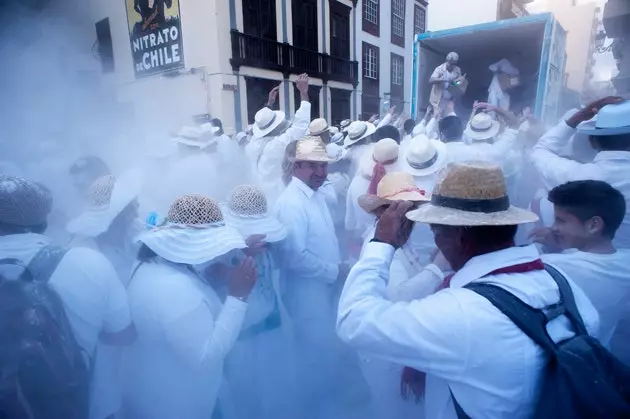
A true white battle
SANTA CRUZ DE LA PALMA (TENERIFE) : TALCUM POWDER WAR Date: from February 13 to March 5
To fully enjoy the carnivals of Santa Cruz de la Palma there are two requirements: the first is to go dressed totally in white; and the second, go well loaded with talcum powder . And it is that on Carnival Monday, the Landing of the Indians, recalling the moment in which the islanders emigrated to America return to the islands boasting of wealth. This fact became a festive parody and since the 1980s a pitched battle of talcum powder has been celebrated to the rhythm of Cuban music. To represent the Indians, men must wear a guayabera and white pants or a linen suit, and a Panamanian hat. The women deck themselves out in white period costumes and lace parasols.
REUS (TARRAGONA) : TOMATO WAR Date: from February 23 to March 1
The residents of Reus are anxiously awaiting the Carnivals in February to make their own tomato . The place: the market square . The tradition comes from the vegetable wars that took place long ago, when leftover vegetables from the market were thrown at each other's heads. The tomato fight in Reus is one of the most striking of all: young people protect themselves with shields and cardboard helmets wrapped with tape. In all, more than 3,500 kilos of tomatoes fly through the air.
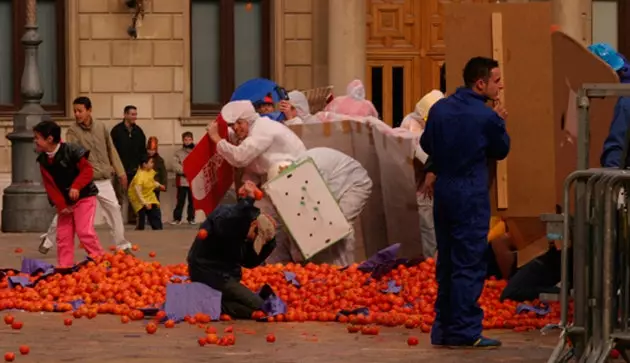
tomato go! Tomato is coming!
TARRAGONA: FIRE AND DEVILS
Date: from February 18 to 28
Living the Carnival of Tarragona can make us feel, for a moment, as if we were in the Valencian fallas. And it is that in the Catalan city fire and rockets are the main protagonists in many of the festive events . And not only the fire, but also the devils and demons . the same Lucifer he embodies the royal notary who reads the will of King Carnelstoltes every year, in Plaça de la Font, while the fire monsters star in the parades. The "ball de diables" and the burning of ninots are other obligatory events during these days of celebration.
AVILÉS: THE DESCENT OF FOAM
Date: from February 22 to March 1
the festive date most popular, extensive and participative of the Asturian carnival calendar it has two aspects. The first is gastronomic , and finds its preponderance on Carnival Monday and Tuesday. Then they are served "Antroxu menus" , made up of Asturian pote, a selection of gochu compango, tripe, stuffed potatoes and the most traditional confectionery of the region, with frixuelos and bollines. The second is, of course, of a playful nature, and far exceeds the expectations of mere disguise on Saturday, when the "Descent of Galiana" . This curious descent takes place on the street of the same name, where multitude of contraptions and ephemeral floats , on wheels and without a motor, they overcome a slope flooded with water and foam.
*This article was originally published on September 2, 2015, and has been updated on February 20, 2017.
